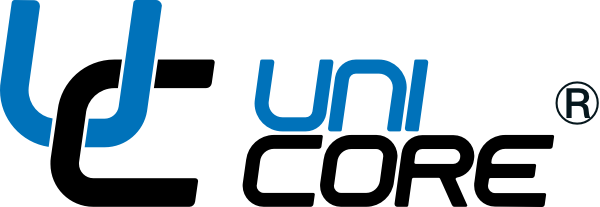Software Engineering
is the path to delivering reliable solutions for every customer.

Implementation
of Software Engineering
Software engineering is not only about structured processes but also about driving continuous innovation through disciplined methodologies. Combining rigorous engineering principles with creativity allows us to design software that is both reliable and adaptable. By leveraging agile frameworks and DevOps practices, we integrate continuous feedback and automation to ensure that software is developed, tested, and deployed efficiently. This blend of structured engineering and innovation provides robust solutions that meet evolving business demands while maintaining high standards of quality, scalability, and performance.
In modern microservices architectures, DevOps automation plays a key role. The DevOps process ensures seamless integration from development to production environments, minimizing disruptions. Automated testing verifies the software’s quality, and deployments occur across different environments, adhering to engineering standards, all without manual intervention.
Software engineering follows structured, methodical approaches that often require flexible tools and procedures. Agile development practices allow for continuous delivery of incremental results, helping validate software against requirements and customer expectations.
Vision and Objectives Definition
Defining the project's vision and objectives is crucial for aligning with your business goals. It sets a clear direction, focusing on scalability and innovation, ensuring the software adapts to future technological changes and market demands.
Collaborating with your team, we help define the project’s long-term vision, ensuring it aligns with your business goals while remaining flexible to adapt to future technological developments and evolving market needs.
Requirements Gathering
Detailed functional and non-functional requirements are gathered from stakeholders, ensuring that the final solution meets your specific needs while identifying and addressing potential risks and constraints early in the process.
Our team will gather detailed functional and non-functional requirements from stakeholders to ensure the software solution meets your specific business needs while identifying potential risks and challenges.
Project Management
Effective project management using Agile and DevOps methodologies ensures iterative progress, continuous feedback, and efficient resource utilization. It helps meet deadlines and project milestones while adapting to changes quickly.
We apply Agile and DevOps methodologies to ensure smooth project execution with iterative development, faster releases, and continuous feedback. We focus on efficient resource management and clear communication to meet deadlines and project goals.
System Design
Developing a robust system design focuses on scalability, performance, and security. It ensures the software architecture can handle current demands and future growth, facilitating maintainability and adaptability to evolving business needs.
We design a robust software architecture through both High-Level Design (HLD) and Low-Level Design (LLD) phases, ensuring scalability, performance, and security, allowing your application to handle both current demands and future expansion.
User Experience Design
Creating an intuitive and user-friendly interface is critical for ensuring seamless interaction with your application. Good UX design enhances usability, boosts engagement, and improves overall satisfaction, leading to a more efficient and enjoyable user experience.
We focus on designing intuitive, user-friendly interfaces that ensure seamless navigation and interaction with your application. By integrating UX design principles, we enhance usability and engagement, improving the overall experience and satisfaction for your end-users while aligning the design with business goals.
Development and Coding
Implementing the application using best coding practices and Agile methodologies ensures high-quality, maintainable software. DevOps automation facilitates continuous integration and testing, leading to efficient development cycles and quicker delivery.
Our team develops the application using industry best practices and Agile development processes. We implement DevOps automation to streamline continuous integration and testing, ensuring the highest quality throughout the development lifecycle.
Arrange a consultation with us.
Tell us more about your needs on the topic.
Testing Services
Thorough testing at multiple levels—unit, integration, and application testing—identifies and resolves issues early. This ensures the software functions correctly, meets quality standards, and provides a reliable user experience.
We provide comprehensive testing services, including automated unit, integration, and performance testing. Our approach ensures early detection of issues, rigorous quality assurance (QA), and the delivery of a reliable product that meets all requirements.
Deployment
Smooth deployment using DevOps automation minimizes disruptions and ensures efficient operation in the production environment. Continuous monitoring post-deployment allows for prompt issue resolution and performance optimization.
Using DevOps automation, we handle the seamless deployment of your software into the production environment, ensuring minimal disruption and enabling ongoing monitoring and optimizations.
Maintenance and Support
Ongoing maintenance keeps your software up-to-date, secure, and aligned with changing business needs. It involves applying updates, fixing bugs, and making enhancements to ensure long-term efficiency and relevance.
Our maintenance services, backed by a comprehensive Service Level Agreement (SLA), include regular updates, bug fixes, and performance enhancements. We ensure your software evolves with changing business needs and remains secure and efficient over time.
Documentation
Comprehensive documentation ensures transparency and ease of maintenance. It helps your team understand the application architecture, codebase, and operational procedures, facilitating future scalability and modifications as needed.
We create comprehensive Technical Documentation (TD) for your software solution, detailing the architecture, code, and operational guidelines, along with project management documentation (PMD) and any necessary regulatory documentation (RD). This ensures your team can understand, maintain, and scale the application while staying compliant with industry regulations.
Training
Providing training ensures that end-users and technical staff can effectively use and manage the software. This maximizes the software's value, enhances user adoption, and minimizes operational challenges.
We offer tailored Learning and Development (L&D) programs for your end-users and technical teams to ensure they can efficiently use and manage the software, maximizing its value and minimizing downtime or operational challenges.
Security and Cybersecurity
Effective security and cybersecurity measures protect sensitive data, prevent breaches, and ensure application reliability. By reducing downtime and safeguarding confidentiality, integrity, and availability, they help businesses maintain compliance, build customer trust, and mitigate financial risks from potential threats.
We integrate comprehensive security measures, including encryption, access control, threat detection, and security audits, throughout the software development lifecycle. Our approach ensures compliance with industry standards, protecting your applications from vulnerabilities and safeguarding data integrity, confidentiality, and availability.
- © 2024 uniCORE, s.r.o.
- Cookies policy
- Personal data protection
